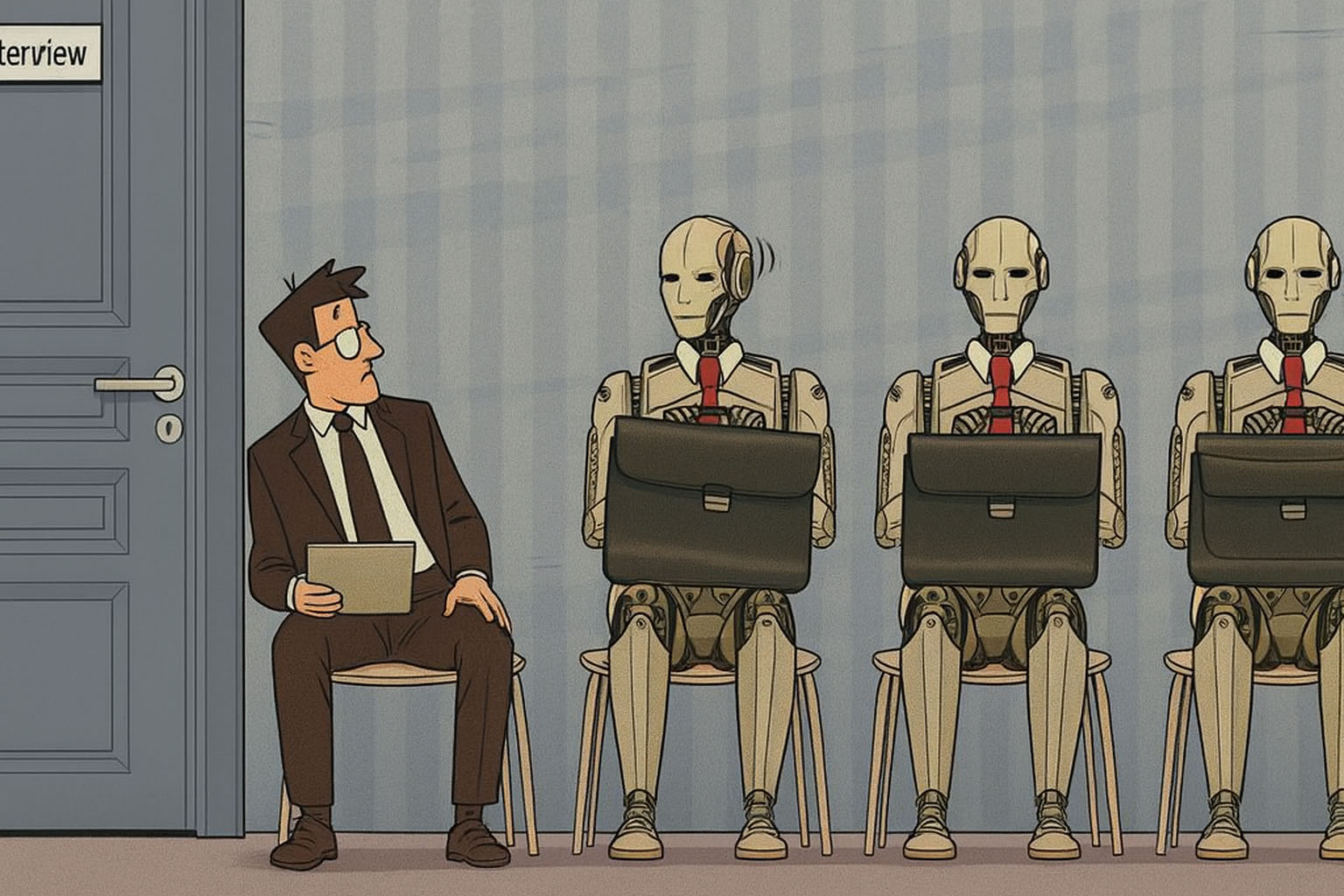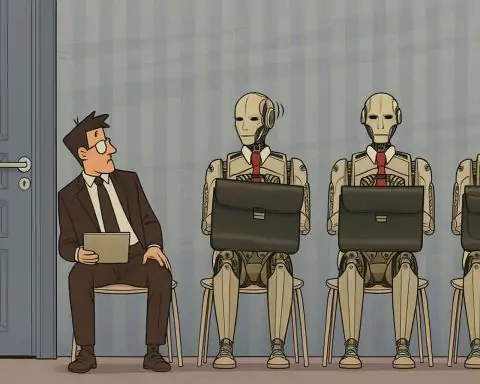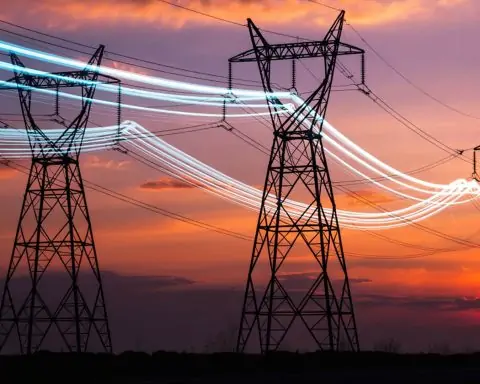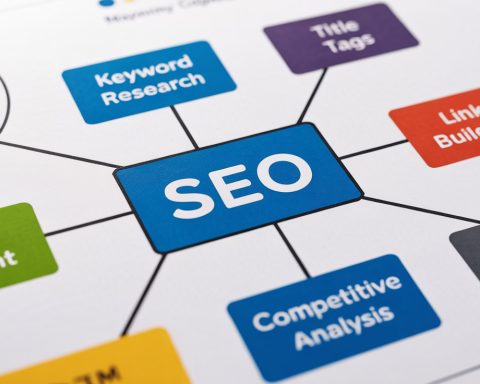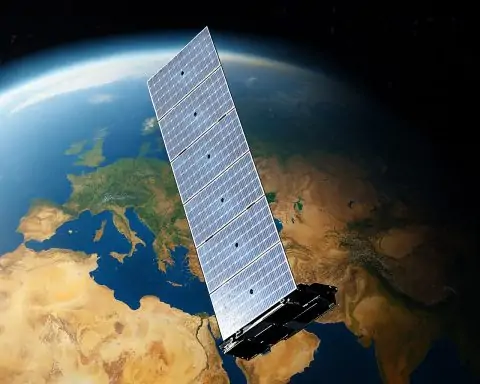- Massive Displacement Potential: Up to 800 million workers worldwide (over 20% of the global labor force) could be displaced by automation by 2030 weforum.org.
- Automation of Tasks: At least one-third of job tasks could be automated in about 60% of current occupations with today’s technology weforum.org.
- Robots Replace, But Also Create Jobs: By 2025, an estimated 85 million jobs may be eliminated by automation, even as 97 million new jobs are generated in fields like AI, data, and content creation weforum.org.
- Net Impact Uncertain: The World Economic Forum’s 2023 outlook sees 83 million jobs lost and 69 million gained by 2027 (a net loss of 14 million, ~2% of global employment) research.aimultiple.com. Yet newer projections through 2030 foresee 170 million new jobs and 92 million displaced, a net increase of 78 million jobs this decade weforum.org.
- Customer Service Revolution: About 85% of customer interactions could be handled without a human by 2025 lleverage.ai – a major threat to call center and support roles. Roughly 3 million Americans and millions more globally work in call centers today fastcompany.com, and up to half of these service jobs may be automated in the next decade fastcompany.com.
- Clerical Jobs Vanishing: Data entry and routine office roles are among the fastest-declining jobs. Over 7.5 million data entry jobs worldwide could disappear by 2027 due to AI automation lleverage.ai, and clerical roles like bank tellers, cashiers, and administrative assistants are most at risk of replacement research.aimultiple.com.
- Retail Automation: The retail sector – one of the world’s largest employers (15.6 million workers in the U.S. alone as of 2024) trade.gov – is rapidly automating. Self-checkout kiosks and AI-driven inventory systems threaten traditional cashier and sales clerk positions research.aimultiple.com.
- Transportation Disruption: Autonomous vehicles could erase millions of driving jobs. In the U.S. and Europe alone, up to 4.4 million trucking jobs might become redundant by 2030 if self-driving trucks are widely adopted fleetowner.com. Taxi, bus, and delivery drivers face similar risks as driverless tech advances.
- New Jobs on the Horizon: History shows technology creates new work. An estimated 8–9% of jobs in 2030 will be in roles that didn’t exist before weforum.org – from AI specialists and data scientists to green energy technicians and app developers. Certain sectors (healthcare, tech, renewable energy) are poised for massive job growth even as automation rises weforum.org.
- Reskilling Imperative: Over 40% of all workers will require significant upskilling or retraining by 2030 to keep pace with AI-driven changes research.aimultiple.com. Governments, businesses, and workers are calling for a global “reskilling revolution” to prepare the workforce for the coming transition weforum.org.
The Current State of Vulnerable Professions
Millions of workers around the globe are employed in job categories viewed as most vulnerable to AI and automation. These include customer service agents, data entry clerks, transportation and logistics drivers, retail workers, and administrative support staff. For example, call centers employ huge numbers of people – roughly 3 million in the United States and many more worldwide handle customer service calls today fastcompany.com. Countries like the Philippines alone have over 1.3 million call center agents serving global clients brightpattern.com. In retail, one of the largest employment sectors (15.6 million U.S. retail workers in 2024) trade.gov, roles from cashiers to inventory clerks are increasingly aided or replaced by technology. Likewise, the transportation sector supports tens of millions of professional drivers globally – truckers, taxi and ride-hailing drivers, bus operators – whose jobs consist of routine driving tasks now in AI’s crosshairs.
These vulnerable professions share certain traits: routine, repetitive work that is relatively easier to automate with current AI or robotic technologies. Customer service often involves following scripts or answering common queries – tasks that AI chatbots and voice assistants are now handling with increasing accuracy. Data entry and administrative work entail processing forms or records, something that optical character recognition and software bots can do tirelessly. Retail sales and service roles involve predictable interactions (scanning items, handling transactions, stocking shelves), many of which are being streamlined by self-service kiosks and intelligent inventory systems. And in transportation, driving on fixed routes or traffic-laden streets is exactly what self-driving vehicle AI is being trained to master. In short, a substantial portion of the global workforce – numbering in the hundreds of millions – currently holds jobs with high exposure to automation. These roles are critical to today’s economy, but they are on the front line of the AI transformation.
How AI Is Replacing and Transforming These Roles
Advances in artificial intelligence are already reshaping or outright replacing many of these vulnerable jobs. In customer service, AI chatbots and voice-response systems can now resolve routine inquiries without human intervention. Companies are rapidly deploying AI “agents” to handle simple calls or chats, from resetting passwords to checking order statuses. This has led to some job displacement in call centers – for instance, the fintech company Klarna replaced 700 of its 3,000 customer service agents with AI chatbots in 2024, handling basic customer queries automatically fastcompany.com. While such moves save costs, they also reveal AI’s current limits: Klarna soon found it still needed skilled human agents for complex issues like fraud or angry customers that the bots couldn’t adequately handle fastcompany.com. This pattern is emerging across the industry: AI takes over routine Tier-1 support, but humans remain essential for higher-level problem solving and empathy. As one call center worker put it, “AI has taken the robot out of us,” meaning the drudgery is automated so human agents can focus on truly serving the customer fastcompany.com. Even so, if technology improves, experts warn a significant share of call center jobs could be automated away (some forecasts say up to 50% in the coming decade) fastcompany.com, especially for simple service roles.
In clerical and administrative fields, software bots and AI-driven platforms are rapidly eroding demand for human data processors. Robotic process automation (RPA) software can input data, reconcile forms, or generate routine reports far faster than people. Digital document AI can scan and extract information with higher than 99% accuracy, outperforming human data entry clerks lleverage.ailleverage.ai. As a result, roles like data entry keyers, file clerks, and even junior accounting clerks are dwindling. The World Economic Forum notes that jobs in data entry, accounting, and administrative support are already “decreasing in demand as automation and digitization in the workplace increases.” weforum.org. By one estimate, more than 7.5 million data entry jobs will be eliminated by 2027 as companies adopt AI-based processing lleverage.ai. However, much like in customer service, automation in these roles often starts by taking over the most repetitive tasks (copy-pasting data, scheduling meetings, basic bookkeeping). Human administrative staff in forward-looking firms are transitioning to more analytical or client-facing tasks that AI cannot easily do – at least for now.
The transportation sector is on the cusp of perhaps the most visible AI disruption: self-driving vehicles. Automation in driving has advanced from warehouse and mining vehicles to city streets. Autonomous taxis are already navigating real traffic in cities like Las Vegas and Phoenix, and major logistics firms are piloting self-driving trucks on highways. If these technologies mature, the implications for employment are enormous. A joint industry report in Europe projected a 50–70% reduction in truck driving jobs across the U.S. and EU by 2030 due to autonomous trucks, which translates to up to 4.4 million drivers potentially out of work in those regions alone fleetowner.com. Globally, when including taxi drivers, delivery drivers, and bus operators, the number of jobs at stake easily runs into the tens of millions. Ride-hailing companies are investing in driverless car R&D, aiming to eventually replace human drivers or at least greatly reduce their numbers. In the trucking industry, early deployments may see automated convoys on highways with one human overseer for multiple trucks, slashing the demand for individual drivers. That said, practical and regulatory hurdles mean human drivers won’t disappear overnight – for example, autonomous systems still struggle with unpredictable urban conditions, and many countries will require a safety driver or remote monitor for years. In the meantime, AI is also changing the nature of driving jobs: truckers increasingly use AI-powered driver assistance (platooning, lane-keeping, predictive routing), and dispatchers rely on AI logistics platforms. This suggests a gradual transformation where the role of “driver” shifts toward managing or co-piloting intelligent vehicles, until full autonomy becomes truly reliable.
Retail and food service workers are likewise seeing AI-driven change. In retail, self-checkout machines and automated stores (like Amazon’s cashier-less Go stores) reduce the need for checkout clerks. AI-powered cameras and sensors can track inventory and detect shoplifting, tasks once done by stock clerks and security staff. Some supermarkets now use robots to roam aisles checking for spills or out-of-stock items. In fast-food and restaurants, automated kiosks let customers order without a cashier, and experiments are underway with robotic kitchen assistants flipping burgers or assembling pizzas. These innovations directly threaten low-wage service jobs that millions rely on. It’s telling that fast-food workers and back-office clerks were highlighted as among those “likely to be most affected” by creeping automation weforum.org. Indeed, the pandemic accelerated adoption of touchless, automated solutions in stores and restaurants, which may permanently reduce staffing needs on the front line. However, the retail sector also demonstrates how AI can augment workers: sales associates armed with AI-driven client data can give personalized recommendations, and some stores repurpose former cashiers as customer experience staff to assist shoppers with using new tech. The net effect is that traditional roles decline, but some new tech-centric service roles emerge (for instance, e-commerce logistics jobs or workers maintaining the machines).
Across all these vulnerable professions, a common trend is emerging: AI is taking over the routine, repetitive, and rules-based aspects of work, while the remaining human roles demand more complex skills, oversight, and adaptability. Not every job will vanish outright; many will evolve. A factory or warehouse might employ fewer people on the assembly line or picking shelves, but more people in supervising the machines, scheduling their work, or performing maintenance – often higher-skill roles. A customer support team might shrink in number, but the remaining agents handle only advanced inquiries and are trained in deeper product knowledge and emotional intelligence. For workers, this means a tough transition: old job descriptions are being rewritten to require new skills alongside AI systems, and in some cases, entirely new jobs are being created (which we’ll explore below). This transition, while disruptive, has a historical precedent of epic proportions – the Industrial Revolution – offering a lens to understand what comes next.
A Transformation on the Scale of the Industrial Revolution
The changes being unleashed by AI and automation are frequently compared to a new Industrial Revolution, and for good reason. Just as steam power, mechanization, and electricity in the 18th–20th centuries revolutionized work, today’s AI revolution promises a similarly profound economic and societal shift. Historically, such transformations have been disruptive in the short term but ultimately beneficial in the long term – a pattern that might well repeat with AI.
During the first Industrial Revolution, mechanized looms and farm equipment famously displaced manual weavers and farmhands, sparking fear and even rebellion (the Luddites who smashed machines in protest). Entire professions vanished as factories rose. However, those changes also unlocked huge productivity gains and new industries, which absorbed workers in different roles. A striking historical example: In the United States, the share of workers in agriculture plummeted from about 90% in 1790 to under 2% today humanprogress.org, thanks to advances in farm machinery. Millions of farming jobs were “destroyed” over the 19th and 20th centuries – yet those workers didn’t all remain unemployed; they transitioned to manufacturing and service jobs that emerged. Similarly, the early 20th century saw manufacturing automation (assembly lines, etc.) reduce the need for some factory labor, but workers moved into growing sectors like automotive, electronics, and eventually services. In fact, despite hundreds of millions of jobs destroyed by technological progress over 200 years, the total number of people employed kept rising to record highs as new types of work appeared weforum.org. Each wave of innovation – steam, electricity, computers – ultimately created more jobs than it eliminated, albeit with a painful period of adjustment.
Today’s AI-driven upheaval is often dubbed the “Fourth Industrial Revolution”, or Industry 4.0, by economists and the World Economic Forum. This phase is characterized by the fusion of digital technologies, AI, robotics, biotech, and IoT into every industry weforum.org. Just as steam power once boosted human muscle power, AI boosts or replaces human cognitive power in tasks like decision-making, problem-solving, and pattern recognition. The expectation (and hope) is that, like past industrial revolutions, AI will raise productivity dramatically and give rise to new industries and categories of jobs we can barely imagine today. WEF experts note that throughout history, dire predictions of permanent mass unemployment have repeatedly been proven wrong weforum.org. Instead, technology shifted the kinds of jobs people do: from farms to factories, then to offices, and now possibly to highly digital and creative endeavors. Each revolution also eventually led to higher overall living standards and the creation of jobs that were often safer and more skilled than the ones lost humanprogress.org.
However, historical analogy is not a guarantee of the future. Many economists warn that the AI revolution could outpace our ability to adapt if we are not proactive. In previous eras, new job creation did eventually catch up, but sometimes only after a generation of difficult transitions and worker displacement. The speed and scope of AI’s impact – reaching both blue-collar and white-collar jobs globally – is unprecedented. For example, unlike earlier automation that mainly affected manual labor, modern AI can replicate some cognitive tasks of educated workers (analysts, translators, etc.) as well. This broad reach means the transition could be as jarring for accountants and customer service reps as it was for agricultural and textile workers in earlier centuries. The societal shifts might also be massive: we may see migrations of workers, changes in education systems, and new social safety nets emerging, much as industrializing societies did in the 1800s.
In summary, the AI-driven transformation of work in the 2020s is comparable in scale to the Industrial Revolution. It heralds a period of “creative destruction”: significant short-term job losses and upheaval, followed (if history is a guide) by the creation of new industries and opportunities. The key question is not whether new jobs will emerge – they almost certainly will – but how quickly and how smoothly workers can transition from the old roles to the new. That is why many policymakers and business leaders are keenly focused on managing this transition, so that AI’s productivity gains lead to broad societal gains, as opposed to just concentrated benefits or long-term unemployment. The next sections discuss what some of those new roles might be and how we can navigate toward them.
New Roles and Industries Poised to Emerge
Even as AI automates certain jobs out of existence, it is also spawning entirely new roles and expanding demand in other fields. History shows that technology opens doors to industries that previously did not exist – just as the rise of computers created millions of IT jobs, and the internet boom created web developers, digital marketers, and app designers. In the same way, the AI revolution is beginning to yield new kinds of work and will fuel emerging sectors in the coming years.
One obvious area of growth is technology itself. There is surging demand for roles like AI and machine learning specialists, data scientists, automation engineers, and robotics technicians. These are jobs directly involved in creating, managing, or operating the new AI systems. For instance, as companies integrate AI, they need professionals to train AI models on data, to maintain AI-driven machinery, and to develop new AI applications. The World Economic Forum’s analyses indicate strong growth in “jobs of tomorrow” related to the AI economy – roles in data analysis, software development, cloud computing, and product development tied to new tech weforum.org. Likewise, cybersecurity experts are in greater need as digital systems proliferate, and AI ethics officers or algorithm auditors are emerging roles as society grapples with AI oversight. Importantly, many of these jobs are high-skilled and did not exist a decade ago. In fact, by 2030, roughly 8–9% of jobs will be in occupations that are completely new weforum.org, a McKinsey study predicts. Just think: not long ago, titles like app developer, social media manager, UX designer, or drone operator would have baffled people – yet today they employ millions. We can expect a similar wave of novel professions to arise from AI. Recent examples already include roles such as prompt engineers (experts in crafting inputs for AI models), AI business strategists, and machine learning explainability specialists.
Beyond the tech sector, entire industries will expand thanks to AI and other megatrends, generating jobs. The World Economic Forum’s 2025 report highlights two big drivers of new employment: the green transition and care economy, alongside technology advances weforum.org. As economies worldwide invest in cutting carbon emissions and combating climate change, they will create millions of “green jobs” – e.g. solar panel installers, wind turbine technicians, electric vehicle infrastructure engineers, and environmental project managers. These roles aren’t a direct result of AI, but they form part of the broader economic shift happening in parallel. At the same time, AI is enabling new efficiencies in energy and agriculture (smart grids, precision farming), which can spur growth in those industries. Interestingly, WEF found that farmworkers could become one of the fastest-growing job categories by 2030, adding tens of millions of positions globally, due to efforts to improve food security and sustainable farming weforum.org. This suggests that not all growth will be in high-tech urban jobs – some will be very much in traditional fields revitalized by technology and investment.
Another major growth area is the health and care sector. As populations age (especially in countries like Japan, Europe, China) and as incomes rise in developing countries, demand for healthcare, elder care, and personal services is soaring. While AI will assist doctors and automate certain diagnostics, it’s widely expected that nursing, caregiving, therapy, and social work jobs will grow rather than shrink in the foreseeable future. These are jobs that require human empathy, complex physical interaction, and social intelligence – all things AI struggles with. The McKinsey report noted that jobs such as care for children and the elderly are less likely to be eliminated by automation weforum.org, and indeed we see that reflected in job projections. For example, nursing and health technician roles are on the rise globally as healthcare systems expand. The “care economy” – teachers, nurses, counselors, personal aides – was identified as a key source of new roles emerging by 2025, contributing significantly to the 97 million new jobs WEF projected weforum.org. These roles benefit indirectly from technology (through better tools and increased demand as productivity elsewhere boosts incomes), but they fundamentally rely on human qualities.
Creative and strategic fields are also expected to blossom in an AI-enhanced world. AI can generate content and crunch data, but it lacks true creativity and critical thinking. That means humans will still lead in jobs requiring imagination, complex decision-making, and interpersonal skills. We may see growth in professions like marketing strategists, innovation managers, product designers, and experience curators. Even in content creation, where AI can now draft articles or create art, human creatives will be needed to guide, refine, and inject originality. There could be entirely new artistic and entertainment mediums enabled by AI where human talent finds a role (for example, directors of AI-generated media, or designers of virtual reality experiences). Likewise, business roles that involve complex relationships – negotiators, team managers, consultants – will continue to be important. AI might handle the analytics or repetitive groundwork, freeing humans to focus on big-picture strategy and interpersonal nuances.
It’s also worth noting how human-AI collaboration itself becomes a job function. Many existing jobs will not disappear but will evolve to work alongside AI. Take manufacturing: rather than an assembly line of pure robots or pure humans, the future factory might have “cobot” (collaborative robot) technicians who work with robotic arms to assemble products, combining machine precision with human adaptability. In offices, we already see roles like AI workflow optimizer or automation coordinator – people who understand both the business process and the AI tools, and can implement them effectively. These kinds of hybrid roles are likely to multiply across industries as companies figure out how best to integrate AI into their operations. In fact, economists Erik Brynjolfsson and colleagues emphasize that new opportunities are emerging in oversight and partnership with AI – jobs in data quality assurance, AI maintenance, training AI systems, and more research.aimultiple.com. Instead of replacing humans entirely, many workplaces will reconfigure jobs so that humans focus on what they do best (creative thinking, complex judgment, empathy) and let AI handle the routine, thereby increasing overall productivity.
In summary, even as AI and automation shrink some traditional occupations, they catalyze growth in others. We can expect a wave of new tech-centric jobs, a boom in healthcare and green economy roles, and the transformation of many existing jobs into higher-skill, more AI-enhanced positions. Notably, WEF’s latest Future of Jobs data from 2025 actually forecasts a net positive job outlook by decade’s end, with 170 million new jobs created versus 92 million eliminated weforum.org – indicating substantial new opportunities if we can connect workers to them. The challenge ahead is ensuring that the workforce can actually fill these emerging roles, which brings us to the importance of preparation and policy.
Expert Perspectives and Future Outlook
The dual nature of AI’s impact – both disruptive and innovative – is reflected in a range of expert opinions and research projections. Some experts issue stark warnings about massive job losses, while others argue that AI will ultimately create more jobs and prosperity. Looking at these perspectives can help us gauge what’s likely and how to respond.
On the alarmist side, a number of tech leaders and analysts believe AI could decimate employment unless we act. Dario Amodei, CEO of AI lab Anthropic, warned in 2025 of a potential “white-collar bloodbath,” suggesting AI could eliminate 50% of all entry-level office jobs within five years and drive U.S. unemployment to unprecedented highs research.aimultiple.com. Similarly, renowned AI expert Kai-Fu Lee predicted that half of all jobs could be displaced by AI by 2027 research.aimultiple.com, highlighting how quickly AI capabilities are expanding. These grim forecasts underline that AI is not just a threat to factory or clerical workers – it could affect accountants, lawyers, journalists, and others who long felt safe from automation. The implication is a potential societal crisis: if half the workforce cannot find work or must change careers within a decade, the economic and social strains would be enormous.
Mainstream economic institutions also acknowledge significant disruption, though in more measured terms. In 2024 the International Monetary Fund (IMF) estimated that around 300 million full-time jobs globally could be affected by AI-related automation research.aimultiple.com. This figure includes jobs that won’t disappear outright but will see a significant portion of their tasks automated. The IMF stressed that for about two-thirds of jobs worldwide, AI will change how work is done (through partial automation of tasks) rather than completely eliminate the role. In advanced economies, up to 60% of occupations could be affected in some way by machine learning – though often this means humans working with AI, not being replaced weforum.org. Investment bank Goldman Sachs likewise projected in 2023 that AI could “disrupt” or “degrade” 300 million jobs, especially in the U.S. and Europe, but simultaneously noted that AI could boost global GDP by about 7% and spur new job creation to offset losses research.aimultiple.com. In other words, while a huge number of current jobs will change or vanish, economic growth fueled by AI might generate an equivalent or greater number of new jobs, as long as markets and skills adjust.
On the optimistic side of the debate, many point to historical resilience of labor demand. Jensen Huang, CEO of Nvidia (a leading AI computing company), argued in 2025 that fears of mass job loss are overblown. He stated that higher productivity from AI will lead to more hiring, not less – following the pattern that each technological leap ultimately creates more wealth, which translates to more jobs in new areas research.aimultiple.com. Huang cautioned against a “fear-driven narrative,” noting that while AI will obsolete some tasks, it will also dramatically lower costs and open up new possibilities, thereby increasing demand for goods and services and the people needed to deliver them. Similarly, the World Economic Forum’s analysis emphasizes that historically, technology’s “pessimists have been wrong repeatedly” about long-term job counts weforum.org. Experts like economist Erik Brynjolfsson advocate for viewing AI as a tool that can augment workers. His research finds that AI adoption correlates with companies reorganizing work so that humans move into new complementary roles (like the oversight and collaboration jobs mentioned earlier) research.aimultiple.com. The key, Brynjolfsson and others note, is providing workers with the skills to transition into these new roles.
Research-backed projections on net job impact vary, which underscores the uncertainty. The World Economic Forum’s 2020 report was relatively upbeat, projecting a net gain of 12 million jobs by 2025 globally (with 97 million new roles outpacing 85 million losses) research.aimultiple.com. By 2023, however, WEF’s survey of employers had a more guarded view – anticipating that by 2027 there would be a net loss of 14 million jobs worldwide as automation’s uptake accelerates research.aimultiple.com. This shift might reflect the pandemic’s effect and faster automation adoption, as well as short-term frictions in creating new jobs. Yet when taking a broader horizon to 2030, as noted earlier, the WEF 2025 report factoring in macro trends sees a net plus of 78 million jobs weforum.org. Meanwhile, studies like one by Oxford Economics (2019) predicted 20 million manufacturing jobs lost to robots by 2030 (mainly in developing countries’ factories), whereas other analyses by the OECD suggest that only about 10% of jobs in advanced economies face high (above 70%) risk of full automation, with most jobs being partially automated instead of fully displaced. This range of estimates tells us that outcomes depend greatly on policy choices, economic conditions, and how quickly new industries absorb displaced workers.
A consistent message from experts is that human adaptation will be crucial. If societies respond with heavy investment in education, training, and supportive policies, the workforce can be reshaped to work alongside AI and fill new jobs. If not, we could face a scenario of high structural unemployment and inequality. There is also consensus that AI’s benefits (higher productivity, new innovations) will not automatically reach everyone – deliberate effort is needed to help at-risk workers adjust. Economists often reference the “productivity paradox” in recent years: even as AI and tech advanced, productivity growth had been slow, partly because organizations and workers take time to learn how to harness new tech effectively. As AI matures, we may finally see a productivity surge, but the distribution of gains will hinge on how we manage the transition.
In sum, expert opinions range from warnings of dramatic, rapid displacement to reassurance that we’ve weathered similar disruptions before. The likely reality is somewhere in between – AI will disrupt millions of jobs, but by no means spells the end of work. There will be a tumultuous adjustment period. How long and painful that period is, and who wins or loses from it, will depend on the actions taken now by governments, businesses, and individuals. The next section outlines some of those recommended actions to ensure this “AI Industrial Revolution” ends in broad-based gains as its predecessors eventually did.
Preparing for an AI-Transformed Economy: Recommendations
Adapting to the massive workforce changes ahead will require coordinated effort on multiple fronts. Governments, industries, and individual workers all have roles to play in easing the transition and seizing the opportunities of the AI era. Here are key recommendations based on expert insights and research:
1. Government Policies and Education: Governments must lead in creating an environment where displaced workers can land on their feet. A top priority is investing in education and reskilling programs at an unprecedented scale. This could include updating school curricula to emphasize STEM, coding, and also uniquely human skills like creativity and critical thinking from an early age. For adults, governments should fund or subsidize vocational training, online courses, apprenticeships, and mid-career retraining initiatives to help workers pivot into new fields. The public sector will need a multi-pronged approach: stronger social safety nets for displaced workers, improved education and training systems, and incentives for businesses to create the “jobs of tomorrow.” weforum.org Social safety nets might involve enhanced unemployment benefits, job placement services, and even experimenting with ideas like universal basic income (UBI) or wage insurance to cushion the blow of job losses. At the same time, policies can encourage job creation by supporting emerging industries (for example, tax credits for green tech startups or AI research centers in regions hit by manufacturing losses). Governments should also facilitate worker mobility – removing barriers for people to relocate or switch occupations, and ensuring that licensing and credentialing systems recognize new skills. In short, proactive governance is needed to manage the labor market upheaval. Some countries are already taking steps: for instance, Singapore has a national SkillsFuture program that gives every adult funds for training, and several European countries are expanding apprenticeships in tech sectors. These efforts need to be scaled up dramatically worldwide.
2. Business Leadership and Worker Transition: Companies deploying AI have a responsibility to do so in a way that considers their workforce’s well-being. Rather than simply automating and laying off, forward-thinking companies should retrain and redeploy employees into new roles alongside AI. The World Economic Forum notes that the most competitive businesses of the future will be those that “invest heavily in their human capital – the skills and competencies of their employees.” weforum.org Employers stand to benefit by upskilling workers: in one survey, 66% of companies expected a return on investment from reskilling workers within just one year weforum.org, due to higher productivity and internal mobility. Businesses should identify roles likely to be disrupted and start cross-training staff for emerging roles (for example, training warehouse pickers to become robot maintenance techs, or upskilling bank tellers to become customer advisors or data analysts). Some large firms have pioneered “AI academies” in-house to teach employees how to work with new AI tools. Additionally, businesses should communicate transparently with workers about technological changes coming, involve employees in planning how AI is implemented, and perhaps slow the pace of layoffs by using natural attrition or offering transitions to contract work if appropriate. Collaborations between industry and government can also be fruitful – companies can partner in public reskilling initiatives or provide input on what skills are most needed. Importantly, businesses can create new jobs even as old ones are lost, by expanding into new markets and innovations that AI makes possible. A mindset of “grow with AI” rather than simply cost-cutting can turn the technology into a tool for expansion and job creation.
3. Empowering Individual Workers: On a personal level, workers need to prepare themselves for a more fluid, tech-centric job market. The era of one lifelong job is fading; instead, continuous learning and adaptability are the new career currency. Individuals should take initiative to update their skills – whether by taking online courses (many high-quality programs in data science, digital marketing, etc. are available at low or no cost), attending workshops, or even going back to school if needed. Emphasizing uniquely human strengths is wise: cultivate skills like creativity, critical thinking, communication, and emotional intelligence, which are hard for AI to replicate. According to the WEF, employers say the top skills rising in importance include analytical thinking, creativity, resilience, flexibility, and complex problem-solving weforum.org. Workers in vulnerable roles might start by learning how to use AI tools to their advantage – for example, a customer service rep could become proficient in leveraging AI chatbots to handle basic inquiries, thus positioning themselves as a supervisor of AI rather than a replaced agent. Networking and career flexibility are also key: being open to switching industries or roles where opportunities arise. In practical terms, a displaced truck driver might retrain as a logistics coordinator for automated fleets, or an administrative assistant might develop skills in project management or HR – areas still requiring a human touch. The good news is that data suggests career transitions into “jobs of the future” are quite feasible; many people currently entering AI and data roles come from completely different backgrounds weforum.org. This indicates that with targeted skill acquisition, individuals can leap into new, growing careers even if they start far afield.
4. Fostering Innovation and New Industries: Both governments and the private sector should encourage the development of industries that will create the next generation of jobs. This involves supporting entrepreneurship and research in high-growth areas like AI, renewable energy, biotech, advanced manufacturing, and others. Startup incubators, R&D tax incentives, and innovation grants can help ensure that technological breakthroughs translate into domestic job growth. Additionally, regional development policies can attract new industries to areas hit by job losses – for instance, establishing technology parks or training centers in former industrial towns to draw in employers. The analogy here is the way some cities successfully moved from decline to renewal by investing in tech hubs or green industries. Moreover, labor market policies can facilitate the creation of more jobs in service sectors that are less automatable – for example, reducing barriers to entrepreneurship in care services, education, arts, and other fields that both employ lots of people and improve quality of life. The goal is to create a diversified economy where the workforce can be absorbed into various sectors, not just all chasing a limited number of high-tech jobs.
5. International and Inclusive Approach: Since this is a global transformation, international cooperation will be valuable. Developing countries, where a large share of jobs could be impacted (e.g. manufacturing automation in Southeast Asia, call center automation in South Asia, etc.), may need support to upskill their workforce and move up the value chain. There’s also the risk of widening inequality – both within countries (between those with AI-related skills and those without) and between countries (tech-savvy economies versus those that lag). To avoid this, global institutions and multinational companies can help spread best practices and resources for training. Investment in digital infrastructure worldwide, from broadband access to affordable online education platforms, will help more people participate in the new economy. Ensuring that underrepresented groups (women, minorities, older workers, rural populations) are included in reskilling efforts is crucial so that the opportunities of AI are shared broadly. Some experts advocate for new forms of social contract: if AI and robots significantly boost economic output, societies might consider mechanisms like robot taxes or profit-sharing schemes to fund worker retraining or provide income support during transitions.
In conclusion, the rise of AI is poised to transform the world of work on a historic scale, but it need not be a disaster. With proactive adaptation, the AI revolution can be navigated much like the Industrial Revolution was – by evolving our skills, institutions, and policies to meet the new reality. This means acting now: companies training their employees for tomorrow’s roles, governments building the educational pipelines and safety nets for a more dynamic labor market, and individuals embracing lifelong learning. The road will have bumps – layoffs, shifts, and uncertainty – but it also holds the promise of a more productive economy and entirely new avenues for human employment. Just as past generations ultimately found better jobs in the wake of automation (though not without struggle), today’s workers can find opportunity in the age of AI. The key is recognizing that this is a societal shift, not just a tech upgrade. By treating it with the same gravity and comprehensive planning as past economic revolutions, we can turn AI’s potential into broadly shared prosperity, ensuring that millions of workers are not left behind but rather are empowered to thrive in the new era.
Sources:
weforum.org, fastcompany.com, lleverage.ai, fleetowner.com, brightpattern.com, research.aimultiple.com, humanprogress.org
